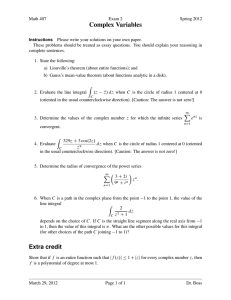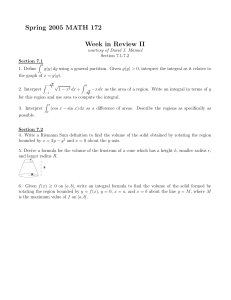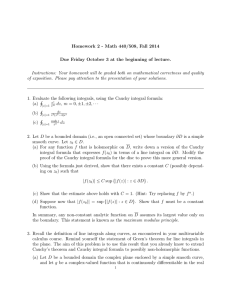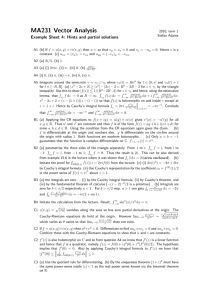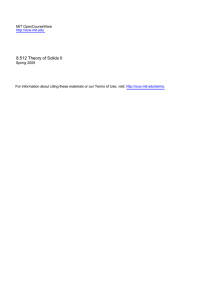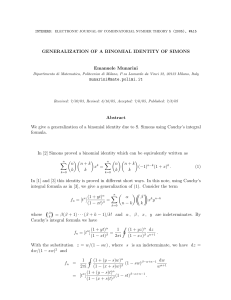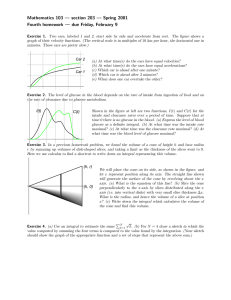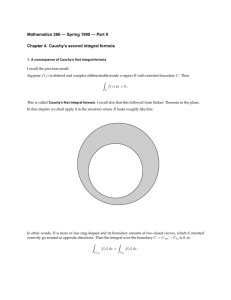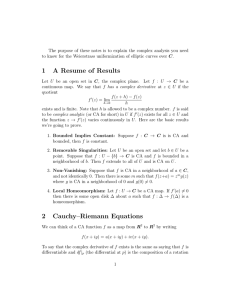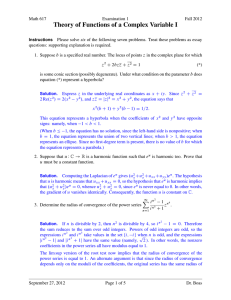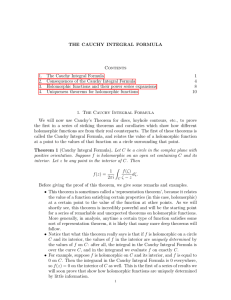Theory of Functions of a Complex Variable I
advertisement
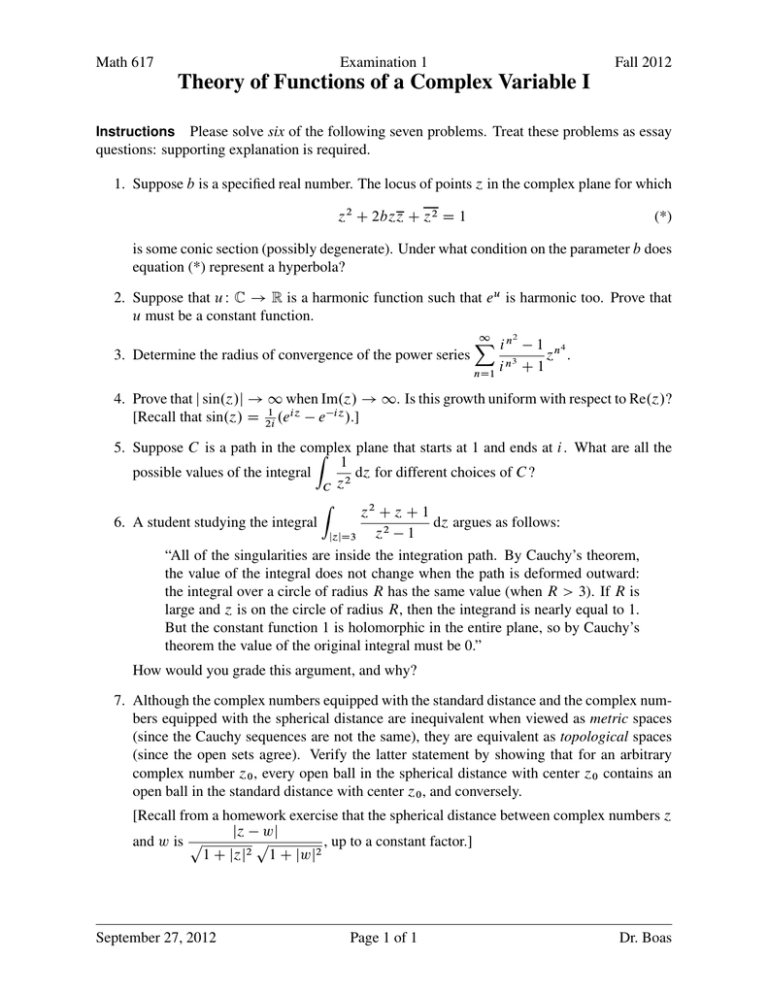
Math 617 Examination 1 Fall 2012 Theory of Functions of a Complex Variable I Please solve six of the following seven problems. Treat these problems as essay questions: supporting explanation is required. Instructions 1. Suppose b is a specified real number. The locus of points ´ in the complex plane for which ´2 C 2b´´ C ´2 D 1 (*) is some conic section (possibly degenerate). Under what condition on the parameter b does equation (*) represent a hyperbola? 2. Suppose that u W C ! R is a harmonic function such that e u is harmonic too. Prove that u must be a constant function. 2 1 X 1 n4 in ´ : 3. Determine the radius of convergence of the power series 3 n C1 i nD1 4. Prove that j sin.´/j ! 1 when Im.´/ ! 1. Is this growth uniform with respect to Re.´/? [Recall that sin.´/ D 2i1 .e i´ e i´ /.] 5. Suppose C is a path in the complex plane that starts at 1 and ends at i . What are all the Z 1 d´ for different choices of C ? possible values of the integral 2 C ´ Z ´2 C ´ C 1 6. A student studying the integral d´ argues as follows: ´2 1 j´jD3 “All of the singularities are inside the integration path. By Cauchy’s theorem, the value of the integral does not change when the path is deformed outward: the integral over a circle of radius R has the same value (when R > 3). If R is large and ´ is on the circle of radius R, then the integrand is nearly equal to 1. But the constant function 1 is holomorphic in the entire plane, so by Cauchy’s theorem the value of the original integral must be 0.” How would you grade this argument, and why? 7. Although the complex numbers equipped with the standard distance and the complex numbers equipped with the spherical distance are inequivalent when viewed as metric spaces (since the Cauchy sequences are not the same), they are equivalent as topological spaces (since the open sets agree). Verify the latter statement by showing that for an arbitrary complex number ´0 , every open ball in the spherical distance with center ´0 contains an open ball in the standard distance with center ´0 , and conversely. [Recall from a homework exercise that the spherical distance between complex numbers ´ j´ wj , up to a constant factor.] and w is p p 1 C j´j2 1 C jwj2 September 27, 2012 Page 1 of 1 Dr. Boas

